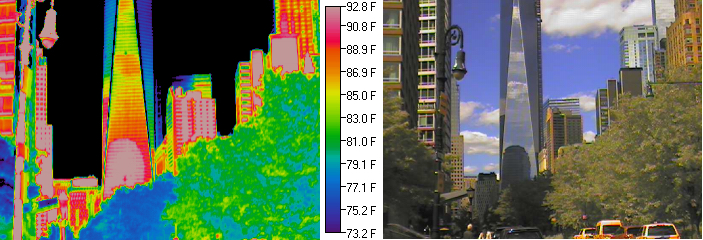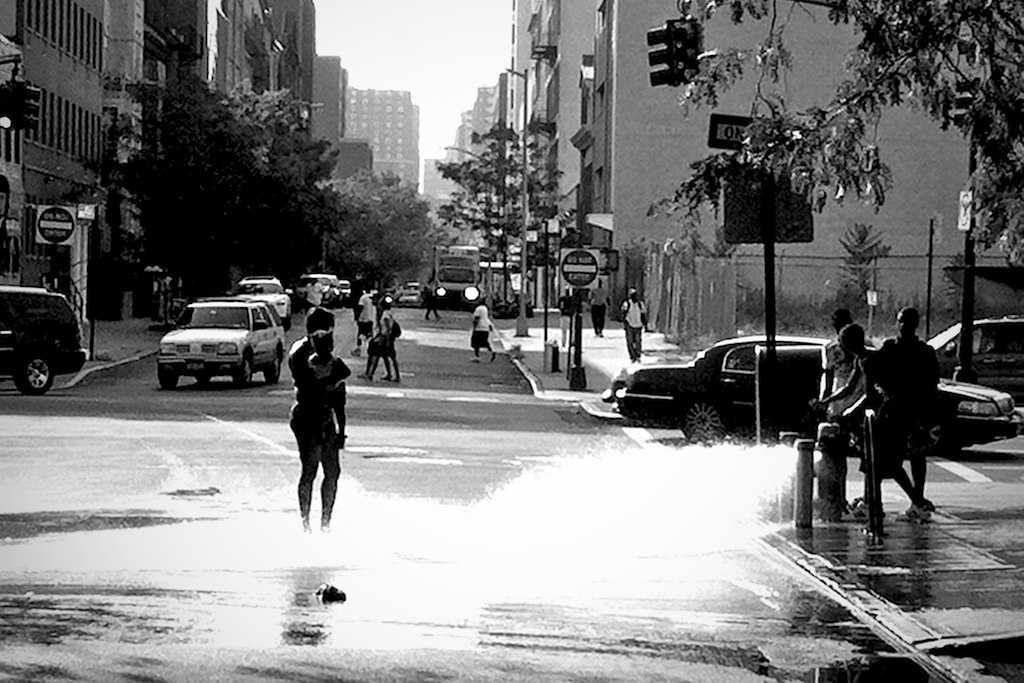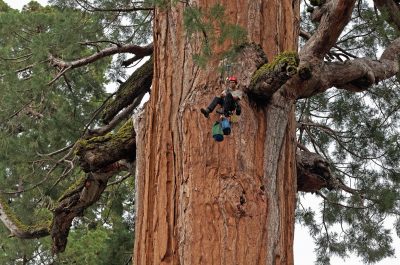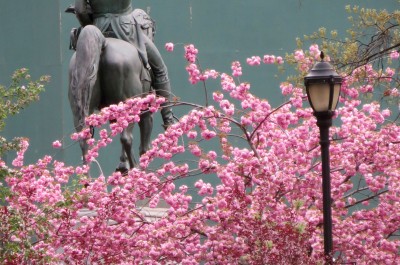With a prediction that 2016 will be the warmest yet recorded, it’s a fair guess that this summer, it’s going to be a hot one. If you live in an urban area, you’re likely to see “some people looking half dead, walking on the sidewalk, hotter than a match head” in a hot town near you.
Your instinct, when you’re walking around say, Manhattan in 95 degree heat, might be to find a fan, or a freezer section, or a block of ice. But Nickolay Lamm went a different way – renting a thermal imaging camera, to point at some iconic NY landmarks in search of the heat signatures. His images for StorageFront.com paint the city in a rainbow of colors, where red represents the hottest surfaces, like the walls of buildings exposed to sun, and blue represents cooler spots, like windows behind which air conditioning is blasting away.

He’s not the only one looking into NY’s hotspots. This summer ISeeChange partners including AdaptNY are planning an investigation into the heat island effect inside the homes of Harlem.
We’ve known for two hundred years that cities where we’ve modified the land get warmer than surrounding rural areas. Now think of the brownstone-dweller, blasting away air conditioning to form a protective pool of cold air against record heat: her rising energy bill is a sign that a changing climate is worsening the problem.
AdaptNY and ISeeChange aim to push along conversations about how New York, and specifically, its neighborhoods, adapt to climate change. “It’s critically important that local communities help lead the process of defining solutions because they have to live with the solutions,” says AdaptNY founder Adam Glenn.
The heat island effect is implicated in health effects like respiratory problems, heat cramps and exhaustion, heat stroke, and even death. Harlem neighborhoods have about the same amount of vegetation and tree cover as other parts of Manhattan. But three summers ago, Central Harlem reported 87% more emergency room visits due to heat stress than New York City as a whole. East Harlem and Washington Heights reported more cases of heat stress too.
It’s not immediately clear why, and we’re interested in helping to find out. The answers may help the City of New York with its adaptation strategy for heat island effect, something city officials have just begun to investigate.
“We certainly don’t have enough information to say that the city is ignoring this and doing nothing,” AdaptNY’s Glenn says. “But most people I’ve been talking to don’t feel that the city is doing enough.”
In Harlem, AdaptNY’s Glenn suspects risk from climate change is exacerbated by inequity. That kind of risk is a focus for the White House, which has declared this week “Extreme Heat Week,” in an effort to focus work on growing resilience for the most vulnerable communities.
ISeeChange and its partners also believe that Harlem residents have valuable observations – and potentially, tips for cooling off – that could help other places in similar stead. “It’s a community that has a tremendous social capital built in,” Glenn says. “It’s got an identity, a cohesiveness, and a political power base which is remarkable.”
For AdaptNY’s project, some volunteers will use temperature sensors twice a day, morning and night, and send those observations to ISeeChange. And some others will go visit elderly neighbors, seeking not just data but also stories about changes that longtime residents have already witnessed. The hope with AdaptNY’s #HarlemHeat project is to bring a lot of data together at ISeeChange and look for patterns.
We do that every day here at #ISeeChange – and you can too. You don’t need to wait another minute to start!
(Top photo by Victor Pillet via Flickr/CC 2.0)




